Ford Built a Crib, But Here Are Some Cooler Blue Oval Inventions

By now, you’ve probably read that Ford Motor Company has developed a crib that mimics a late-night car ride. You know, those journeys to nowhere fueled by nothing other than a desperate desire to shut your kid up for a few hours?
Yes, with Ford’s prototype crib, your bundle of joy will be rocked and jostled to sleep while you grab some much-needed shuteye. Your car never needs to leave the garage. Had my parents owned such a thing, it would have curtailed many nocturnal forays in a Lean Burn-equipped Plymouth Volaré that stalled when it reached a stop sign — at least, until the engine temperature rose.
There’s no need for compromised Slant Six engines when Mark Fields is doing the babysitting. You see, Ford’s Max Motor Dreams cot will record the vehicle movements and sounds of your go-to driving route and reproduce them in the comfort of your home. The company even claims that the German-designed cot might see production.
That’s great, but a crib isn’t a vehicle.
So, in light of this static, motorized cot (why didn’t Ford shape it like a Fox-body Mustang?), here are some neat Blue Oval products from yesteryear: one of which will kill you, another that killed one of its two operators, and a final product that could kill your entire neighborhood.
Ford 3-Ton M1918
Following the United States’ 1917 entry into the mud and trenches of World War One, American forces needed a small, nimble tank to break through German lines. The powers that be in Washington quickly got Henry Ford on the line. Build us something, and quick, they said.
Ford’s answer was a two-man tank (tankette, really) powered by two Model T engines. While 45 horsepower in a three-ton vehicle doesn’t sound like the makings of an exhilarating ride, speed was not a big consideration in the grim stalemate of WWI. The M1918 could do 8 miles per hour and possessed a range of 34 miles.
More important than power was the vehicle’s armor and .30-06 machine gun. Though 15,000 were ordered, the subsequent Armistice meant that only 15 of these all-terrain, war-utility vehicles ever rolled off the line.
Ford Flivver
Hailed by Henry Ford as the “Model T of the air,” the company’s attempt to build a one-seat aircraft for the working man met a sudden and violent end.
Produced in 1927, the Flivver was built at the request of Mr. Ford himself. Ol’ Henry wanted it to be small enough to fit in his office and, presumably, cheap enough for middle class men to add to their list of recreational toys. While the Stout Metal Airplane Division of the Ford Motor Company had enjoyed instant success with its three-engined Trimotor airliner, top brass were not impressed by this collection of steel tubing, wood and fabric.
At Ford’s urging, development went ahead.
The company patriarch convinced Charles Lindbergh to take one of the three prototypes for a spin in 1927, and he reportedly hated the thing. Not dissuaded by that thumbs-down review, Ford, with the help of test pilot Harry Brooks, attempted to set a PR-friendly long-distance record for light aircraft.
Brooks, a friend of Ford, went down in the Ford Flivver off the coast of Melbourne, Florida on February 25, 1928, after suffering engine failure. His body was never found, and Ford scrapped the concept of an everyman’s airplane.
1958 Ford Nucleon
Man, the 1950s must have been a gas, gas, gas. Technological advancements aimed at making postwar American life even easier seemed to burst from the country’s scientific and manufacturing sectors like dandelions.
Compression ratios — and displacements — were on the rise in Detroit, but Ford was thinking about a new type of engine. One that was inspired by a new form of power plant, powered by the same fuel found in Little Boy. Uranium!
Yes, the Ford Nucleon, which appeared only as a scale prototype, was Ford’s vision of a future in which everyone’s car was powered by a small nuclear reactor stored behind the passenger compartment. You’ll never have to buy gas again! (You will, however, have to dispose of that radioactive fuel every 5,000 miles.) The company envisioned the powerplant creating torque-producing steam in the same manner as a boiling water reactor.
Just imagine your car’s engine melting through the pavement on its way to China after suffering a water pump failure. Naturally, this concept went nowhere, saving the country from having herds of Chernobyls and Fukushimas coasting through rush hour traffic.

More by Steph Willems
Latest Car Reviews
Read moreLatest Product Reviews
Read moreRecent Comments
- W Conrad I'm not afraid of them, but they aren't needed for everyone or everywhere. Long haul and highway driving sure, but in the city, nope.
- Jalop1991 In a manner similar to PHEV being the correct answer, I declare RPVs to be the correct answer here.We're doing it with certain aircraft; why not with cars on the ground, using hardware and tools like Telsa's "FSD" or GM's "SuperCruise" as the base?Take the local Uber driver out of the car, and put him in a professional centralized environment from where he drives me around. The system and the individual car can have awareness as well as gates, but he's responsible for the driving.Put the tech into my car, and let me buy it as needed. I need someone else to drive me home; hit the button and voila, I've hired a driver for the moment. I don't want to drive 11 hours to my vacation spot; hire the remote pilot for that. When I get there, I have my car and he's still at his normal location, piloting cars for other people.The system would allow for driver rest period, like what's required for truckers, so I might end up with multiple people driving me to the coast. I don't care. And they don't have to be physically with me, therefore they can be way cheaper.Charge taxi-type per-mile rates. For long drives, offer per-trip rates. Offer subscriptions, including miles/hours. Whatever.(And for grins, dress the remote pilots all as Johnnie.)Start this out with big rigs. Take the trucker away from the long haul driving, and let him be there for emergencies and the short haul parts of the trip.And in a manner similar to PHEVs being discredited, I fully expect to be razzed for this brilliant idea (not unlike how Alan Kay wasn't recognized until many many years later for his Dynabook vision).
- B-BodyBuick84 Not afraid of AV's as I highly doubt they will ever be %100 viable for our roads. Stop-and-go downtown city or rush hour highway traffic? I can see that, but otherwise there's simply too many variables. Bad weather conditions, faded road lines or markings, reflective surfaces with glare, etc. There's also the issue of cultural norms. About a decade ago there was actually an online test called 'The Morality Machine' one could do online where you were in control of an AV and choose what action to take when a crash was inevitable. I think something like 2.5 million people across the world participated? For example, do you hit and most likely kill the elderly couple strolling across the crosswalk or crash the vehicle into a cement barrier and almost certainly cause the death of the vehicle occupants? What if it's a parent and child? In N. America 98% of people choose to hit the elderly couple and save themselves while in Asia, the exact opposite happened where 98% choose to hit the parent and child. Why? Cultural differences. Asia puts a lot of emphasis on respecting their elderly while N. America has a culture of 'save/ protect the children'. Are these AV's going to respect that culture? Is a VW Jetta or Buick Envision AV going to have different programming depending on whether it's sold in Canada or Taiwan? how's that going to effect legislation and legal battles when a crash inevitibly does happen? These are the true barriers to mass AV adoption, and in the 10 years since that test came out, there has been zero answers or progress on this matter. So no, I'm not afraid of AV's simply because with the exception of a few specific situations, most avenues are going to prove to be a dead-end for automakers.
- Mike Bradley Autonomous cars were developed in Silicon Valley. For new products there, the standard business plan is to put a barely-functioning product on the market right away and wait for the early-adopter customers to find the flaws. That's exactly what's happened. Detroit's plan is pretty much the opposite, but Detroit isn't developing this product. That's why dealers, for instance, haven't been trained in the cars.
- Dartman https://apnews.com/article/artificial-intelligence-fighter-jets-air-force-6a1100c96a73ca9b7f41cbd6a2753fdaAutonomous/Ai is here now. The question is implementation and acceptance.






















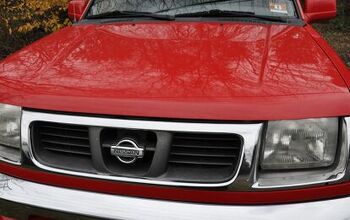

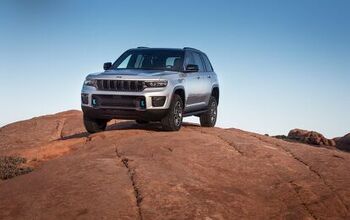


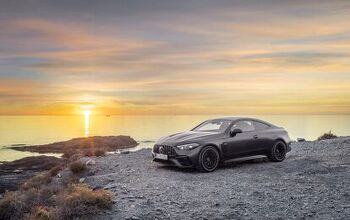
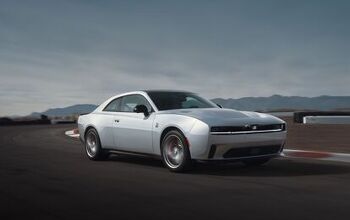
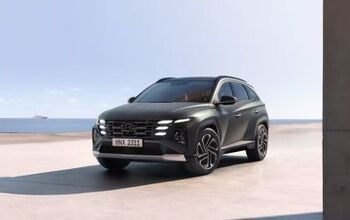
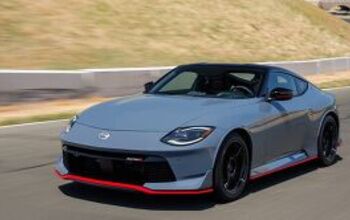
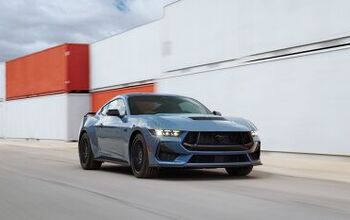
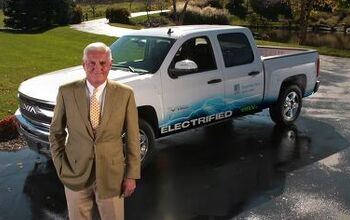

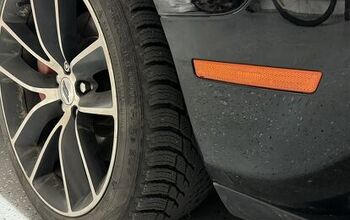
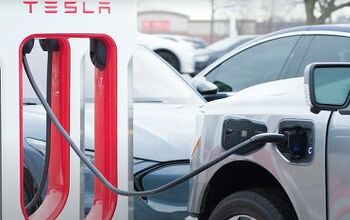

Comments
Join the conversation
Not to forget some awesome tractors. It used to be you couldn't throw a stick without hitting an 8000 series Ford. Then Fiat bought them and....
If this didn't cost a zillion dollars, as I am sure it would if was to ever be sold commercially, I'd get one. I don't take my son (he's two-months-old) for late night drives to lull him to sleep because I'm too sleepy myself and I'm afraid I'll wreck. But, the car does put him to sleep during the day.